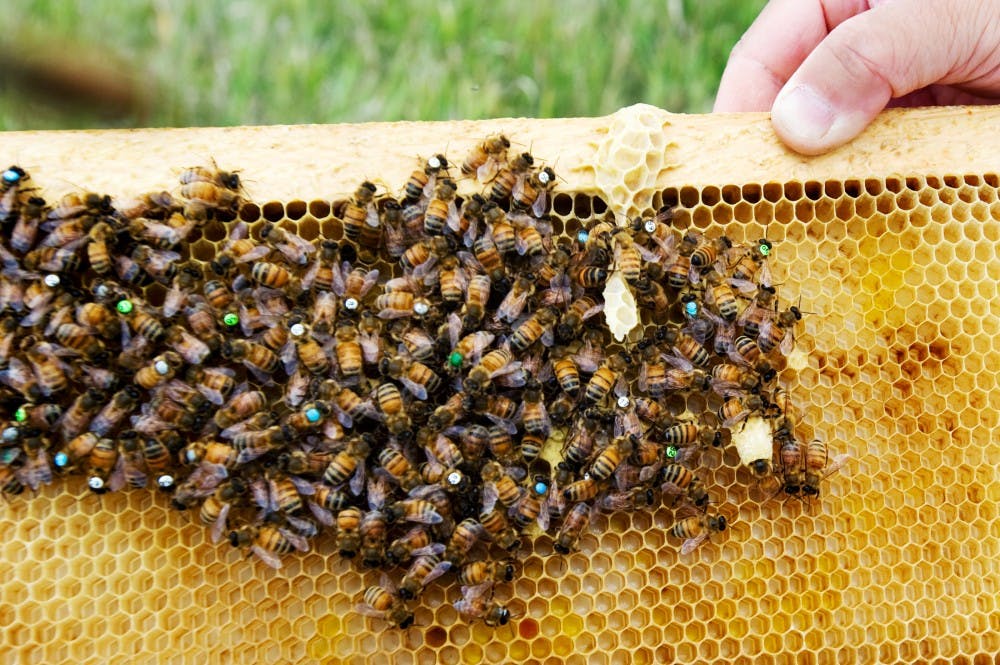MSU is home to extensive pollinator research.
The Pollinator Performance center added capacity for winter housing and installed a honey extraction system in 2022. These improvements allow MSU to amp up research into pollinators.

Associate professor of entomology Zachary Huang points out an emergency cell the bees created after their queen bee was killed Aug. 30 at the MSU Inland Lakes Water Research lot.
MSU is home to extensive pollinator research.
The Pollinator Performance center added capacity for winter housing and installed a honey extraction system in 2022. These improvements allow MSU to amp up research into pollinators.
Outside of the pollinator center, MSU continues to support pollinator populations by way of the pollinator gardens. These gardens were planned and planted by Sustainable Spartans, a student organization dedicated to educating others about sustainable practices and implementing projects it feels address issues on campus.
"The more pollinator gardens we have; the more bees we have. The more bees we have; the more life we have," said marketing junior Brad Kuron, self-proclaimed bee super fan.
Kuron is an avid supporter of pollinators, specifically bees, and credits them with keeping the world alive. "If pollination wasn't a thing, we wouldn't have these beautiful trees and flowers."
According to the USDA, 80% of crop plants used around the world rely on pollination to reproduce and have noticeably higher crop yields after visits from pollinators. This includes almost all fruit and grain crops across the world.
But, what draws a pollinator to a plant? If you ask chemical engineering senior Lauren Murray, the answer could be found in the structure of a flower petal's cells.
"The structure of (flower petals) always interested me because they're all different," said Murray. Murray analyzed the structure of five different flower petals under an electron microscope and found that some flower petals have flat cells while others have a conical shape.
Murray's research is based on a 2009 report from Cambridge University where researchers analyzed the petal structure of insect-pollinated plants to determine what causes bees and other insect pollinators to prefer certain flowers over others.
In recent years, the study and utilization of pollination has been steadily increasing as agricultural fields see an improvement in crop size and yield after the pollination process is completed. At MSU, the study of pollinators has only begun.
The Pollinator Center's farm manager Dan Wyns said bees are kept in artificial hives that are transported from farm to farm in order to pollinate a crop. Beekeepers are contracted by farmers to transport and maintain bees while they are pollinating a farmer's crops.
Support student media! Please consider donating to The State News and help fund the future of journalism.